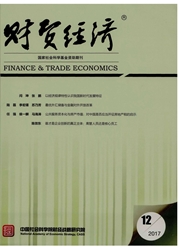

 中文摘要:
中文摘要:
近年来,“雾霾天”在我国很多地区频繁出现,引起了全社会的广泛关注。我们怀疑城市空间结构会对雾霾污染产生影响。本文综合利用PM2.5地表浓度数据、全球夜间灯光数据、LandScan人口分布数据以及经济统计资料,计算了我国各城市的蔓延指数,并实证分析了城市蔓延和城市规模对地级市雾霾污染的影响。研究结果表明:城市蔓延会提高当地PM2.5浓度,人口规模的提高也会有类似的效应,而且,城市蔓延与雾霾浓度的同方向关联会因城市规模的增加而减弱,小城市的空间蔓延会导致更为严重的空气污染。此外,工业城市经常有更高的雾霾浓度。本文结论具有如下现实意义:在城市内部空间规划方面,应该控制各城市尤其是小城市的无序蔓延,坚持紧凑式空间结构;在城市体系优化方面,应稳步发展中小城市,并适当控制大城市规模,促进大中小城市的协调发展。
 英文摘要:
英文摘要:
Haze pollution has been more severe in many places in China, thus raising awareness of the whole society. Our paper focuses on how urban sprawl, a kind of urban spatial structure change, will affect haze pollution in Chinese cities. We fully use PM2.5 concentration data, DMSP night-time light data, LandScan population data as well as domestic statistical figures, and develop a new measure of urban sprawl, and construct the panel data model based on municipal cities in China. The empirical research shows that urban sprawl improves the concentration of PM2.5, growth of urban population has similar effect, furthermore, in a city with larger population, the positive relations between sprawl and haze is less obvious compared with small cities. Also, the proportion of fixed capital investment and the second industry do play a role in haze pollution.
 同期刊论文项目
同期刊论文项目
 同项目期刊论文
同项目期刊论文
 期刊信息
期刊信息
